What Is Rococo Style? Shocking Insights You Must Know
The Dark Side of Beauty: Rococo’s Scandalous Past
Rococo style wasn’t just about pretty pastels and curved lines. It was a rebellion.
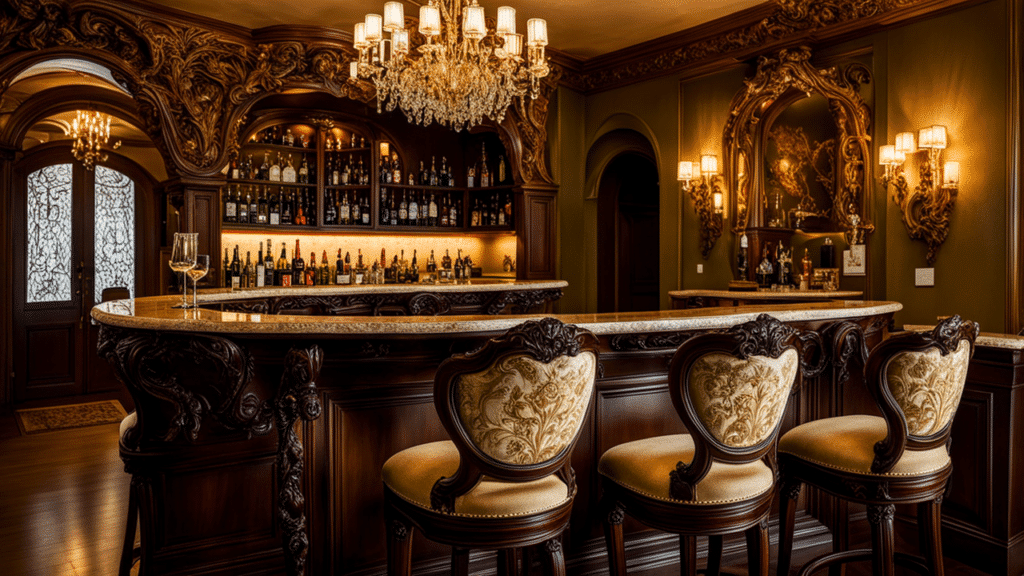
The year was 1722. King Louis XV had just taken the French throne at age 12. His reign would birth an art movement so bold that it made the Catholic Church uncomfortable.
While church officials preached modesty, Rococo artists filled palaces with paintings of nude figures lounging on clouds. They replaced sacred religious symbols with playful cherubs and scenes of secret love affairs.
But here’s what most people don’t know: Rococo was the first art movement to prioritize personal pleasure over public power. In a time when art served kings and gods, Rococo dared to suggest that art could exist simply for joy.
Today, when you walk into an 18th-century French palace, you’ll notice something odd. The ceilings aren’t covered in scenes of battles or biblical stories. Instead, you’ll find myths of love, garden parties, and intimate moments. This wasn’t an accident. It was a statement.
Think of Rococo as the Instagram filters of its time – it made everything prettier, softer, more appealing. But beneath its pastel surface lay a profound shift in how humans viewed themselves and their right to pleasure.
The real shock? This “frivolous” style changed how we think about personal space forever. It was the first time in history that comfort became more important than grandeur in interior design.
Want to know how this controversial art movement can transform your modern living space? Let’s start with its most surprising secrets.

What is Rococo Style?
- Rococo Style is an 18th-century artistic movement known for ornate details, pastel colors, and playful themes.
- Originating in France, it reflects luxury and elegance.
- Rococo Style differs from Baroque in that it is light and decorative, focusing on charm.
Examples of Rococo Style

What defines the Rococo Style? Rococo Style showcases elaborate details and a penchant for pastel color schemes. It often draws inspiration from nature, incorporating gentle and lighthearted motifs.
One of the most notable examples of Rococo style is the work of François Boucher. His paintings embody the essence of Rococo with playful motifs and soft colors. Boucher’s art captures themes of love and whimsy, often depicting scenes of aristocratic leisure with intricate detail.
In architecture, the Amalienburg pavilion in Bavaria stands out. This structure epitomizes Rococo’s love for asymmetry and ornate embellishments. The Amalienburg features intricate carvings and playful use of light, giving it a whimsical yet luxurious presence in the architectural landscape.
Types of Rococo Style
The Rococo Style can be seen across various forms, including visual arts, interiors, and fashion. Each medium displays unique qualities but shares the Rococo hallmark of elegance and intricate detail.
In visual arts, Rococo is known for its light-hearted scenes and use of soft, pastel palettes. Paintings often depict romantic and playful themes, filled with cherubs, flowers, and natural elements. Interiors, on the other hand, focus on creating intimate, comfortable spaces. Furniture pieces are typically curved and adorned with elaborate decorations.
Fashion during the Rococo era reflected the same love for detail and elegance. Rich fabrics, elaborate lace, and intricate embroidery characterized clothing. These elements combined to create garments that embodied the luxury and grace synonymous with the Rococo period.

Rococo Art Characteristics
Rococo art is best described by its light colors, asymmetrical designs, and themes centered around love and nature. The style often incorporates curves, striving for fluidity and movement.
The three basic characteristics of Rococo art are its focus on ornate details, soft pastel hues, and asymmetry. It emphasizes an intricate, decorative aesthetic that often seems playful and whimsical. This often contrasts with the grandiosity of the preceding Baroque style, which favored boldness and symmetry.
A key feature in Rococo art is the frequent representation of love in personification and romantic symbolism. The themes are often lighthearted, capturing moments of joy and leisure. Nature is a central motif, with artists using shells, flowers, and foliage to embellish their creations.

Rococo Interior Design
Rococo interior design centers on opulence and comfort, emphasizing creating intimate and inviting spaces. The interiors boast ornate furniture, extravagant decorative items, and a color scheme dominated by soft, warm hues.
Furniture in Rococo spaces is typically elaborate yet delicate, often made with curves that add elegance. These pieces are designed to be both beautiful and comfortable, inviting people to enjoy their surroundings.
Rococo interiors also feature various decorative elements, from intricate moldings to luxurious textiles. Fabrics used in these spaces are often rich and textured, contributing to the cozy, intimate atmosphere that is quintessentially Rococo.

Benefits of Rococo Style in Interior Design
- Adds luxury and opulence to spaces
- Balances coziness with sophistication
Enhancing Elegance
Rococo style injects elegance through its use of curves and elaborate motifs. It stands apart by embracing playful and delicate elements. These details create a visual richness that makes any room feel alive. The key to Rococo design lies in its curves, which aren’t just aesthetic choices but soften a space’s overall look. Curves in Rococo design are complemented by motifs that often include floral and shell designs. The motifs are intricately worked into the walls, ceilings, and furniture, creating an immersive decorative layer.
Noted expert Gavin Bailey mentions that surface ornamentation and the use of gilding compartmentalize elements like mirrors and panels. This compartmentalization helps guide the eye, making spaces dynamic and harmonious. Within this framework, pieces of art or furniture do not stand isolated but rather contribute to a unified aesthetic narrative. The elegance of Rococo is not just surface-deep. It connects spaces visually and thematically, ensuring that rooms blend artistic expression and function.

Creating Intimacy in Spaces
One of the defining traits of Rococo is its focus on cozy and personal spaces. Whereas other design styles might use bold colors or sharp lines, Rococo opts for warm palettes and inviting materials. This softer approach transforms large rooms into more intimate settings, offering comfort and luxury. The warm tones, alongside tactile materials like velvet and silk, evoke a sense of closeness. They encourage personal interaction and relaxation.
Furniture is another key element in enhancing intimacy within Rococo interiors. Pieces are typically smaller and more varied in shape, embodying gentle curves and soft edges. This move toward a more human scale further encourages ease and conversation. The use of circular or oval forms in room and furniture design invites people to gather, promoting interaction in a friendly environment. Regarding resources, “The Rococo Interior” by Katie Scott provides an in-depth look at how these designs historically fostered social intimacy within grand spaces.
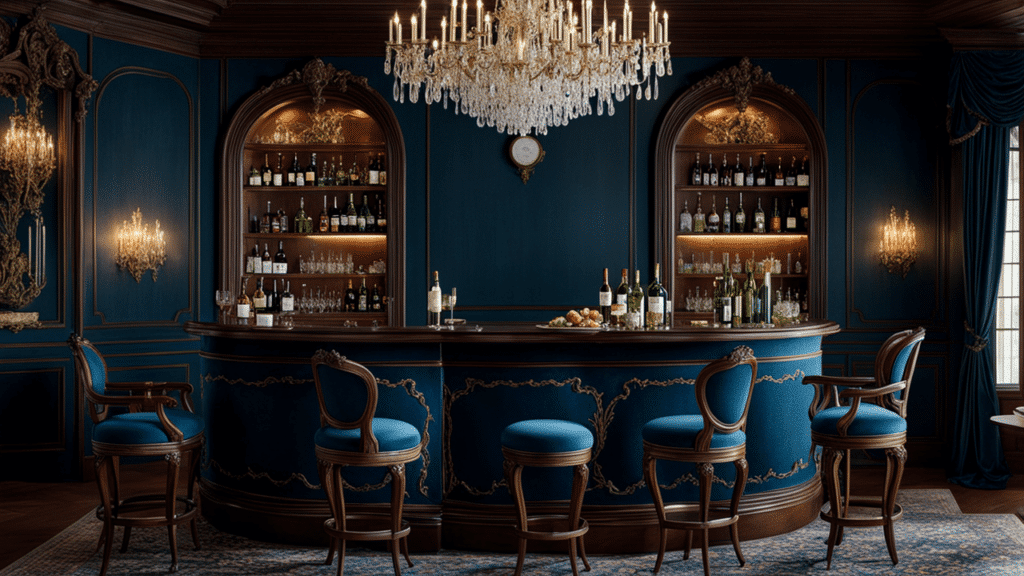
Fusion of Arts for a Unified Aesthetic
Rococo interiors often integrate multiple art forms to produce a cohesive aesthetic experience. Walls, ceilings, and furniture are not treated as separate elements but are brought together through common decorative themes. Many Rococo interiors are designed as holistic art pieces, where paintings, sculptures, and furnishings blend seamlessly. This synthesis of art forms is not merely decorative. It serves to reinforce the narrative of the space.
The Rococo style also frequently uses elements like boiseries—ornate wooden paneling—over walls to unite design aspects. The panels are intricately carved and often include mirrored sections. Such intricate details lead to a sense of depth and complexity. For enthusiasts who want to immerse themselves deeper into this subject, “The Rococo” by Anna Marie Hargrove offers detailed analysis and examples of these integrations. The text dives into Rococo spaces that symphonically use music, art, and decor to capture a harmonious environment.

Balancing Light and Openness
Rococo interiors are masterful in balancing light and space. The style often incorporates large windows, using natural light to enhance its pastel palettes and reflective decorations. Features like mirrors, polished wood, and gilded accents magnify this effect, making rooms appear larger and more airy. This approach opens up physical spaces and invites emotional openness in those who use them.
Lighting is carefully curated to amplify these effects. Chandeliers with crystals, for example, are classic Rococo elements that scatter light across rooms, enhancing textures and colors. The use of light is not just functional but conceptually aligns with Rococo’s themes of playfulness and brightness. Exploring “Rococo Ornamentation” by Claire Leclerc, you’ll find discussions on how this interaction between light and decor transcends mere illumination. It fosters a unique ambiance that defines Rococo interiors.
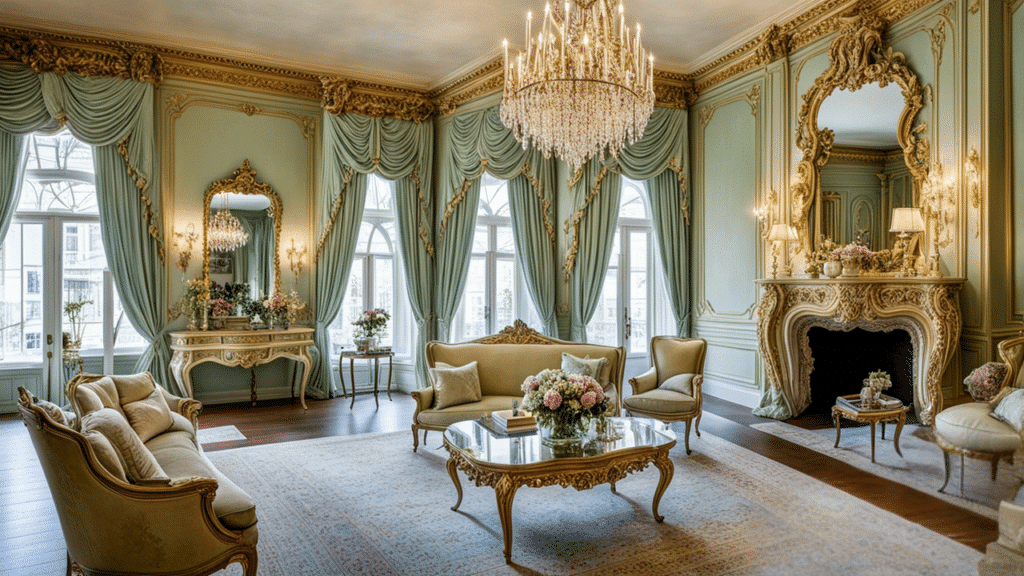
Controversies and Critiques
While the Rococo style has its devoted followers, it also encounters its share of criticism. Some argue that the style can be overbearing, with rooms feeling cluttered due to its intense decorative approach. The abundance of detail can sometimes overwhelm rather than soothe the modern eye, which often favors minimalism. Critics have pointed to this as a downside, where the style’s aesthetics overshadow functionality.
Despite these critiques, many designers argue that Rococo’s attention to detail creates an inviting warmth, countering the sterility often associated with minimalist designs. For those interested in exploring this debate further, the book “Baroque and Rococo Art and Culture” by Vernon Hyde Minor offers critical perspectives on Rococo. It highlights both its shortcomings and enduring appeal.
This balance of opulence and intimacy, as well as luxury and comfort, makes Rococo a versatile yet complex style that engages both advocates and critics alike.

Historical Context of Rococo Style
- Rococo developed in early 18th-century France during the reign of Louis XV.
- Criticized for being frivolous and lacking depth.
- Gained popularity among the aristocracy before falling out of favor.
Rococo vs Baroque
Rococo and Baroque styles often get confused, yet they differ significantly. Baroque is known for its grand, bold presence. It uses dramatic elements to convey power and emotion. In contrast, Rococo offers a lighter and more decorative approach. Rococo has a more private, soft, pleasing feel, while Baroque art is dramatic and powerful. Rococo focuses on elegance and charm, favoring intricate details and soft colors. It reduces the grand scale of Baroque architecture, opting for intimate interior spaces.
Unlike Baroque’s masculine aura, Rococo embraces femininity in art and design. Whereas the Baroque style exudes a masculine energy and presence, Rococo art has a more demure, beautiful, feminine aura. Rococo’s playful themes often involve romance and idyllic nature. Consider reading “Rococo: The Continuing Curve, 1730-2008” by Sarah Coffin for a deeper understanding. It explores Rococo’s evolution and compares it with other styles.

Rococo in Social Context
Rococo emerged among the French aristocracy, a reflection of their leisurely lifestyles. The style became synonymous with the elite’s love for luxury and pleasure. Characterized by soft pastel colors and frivolous themes of love and pleasure, the Rococo style reflected the privileged and pampered lifestyle of the 18th-century aristocracy. It was a visual representation of opulence and escapism, a stark contrast to the Baroque style, which was heavily influenced by religion and state power.
However, this association with the elite led to its downfall. As societal norms shifted and criticisms grew, Rococo fell out of favor. It was criticized for its lack of substance, seen as too frivolous during more austere times. Thinkers like the philosophes argued against it, favoring Enlightenment ideals of reason and order. They saw Rococo as superficial, dismissing it for not contributing to the emerging intellectual discourse. Denis Diderot, a noted Enlightenment figure, harshly critiqued its lack of moral and philosophical depth.

Why Was Rococo Hated?
Rococo faced significant backlash for several reasons. First, it was considered excessively ornate and decorative, often viewed as lacking serious substance. Critics argued that its emphasis on beauty and pleasure ignored the socio-political changes of the time. The public began rejecting Rococo paintings because they did not reflect the rising Enlightenment values that prioritized reason and practicality.
Moreover, Rococo’s association with the excesses of the French aristocracy made it a target during the lead-up to the French Revolution. As the demand for reform and accountability rose, the lavishness of Rococo became a symbol of the detachment and indulgence of the ruling class. The art and architecture that once epitomized luxury fell out of style as society sought more meaningful and egalitarian expressions. For further exploration, Robert Neuman’s “Baroque and Rococo Art and Culture” delves into the intricacies of these critiques.
Decline and Legacy
By the late 18th century, Rococo began to decline as Neoclassicism rose to prominence. This new style rejected Rococo’s ornate aesthetics, favoring classical simplicity and philosophical themes. Neoclassicism aligned more with Enlightenment ideals, contrasting with Rococo’s focus on frivolity. This shift was influenced by changing political climates and a desire for new artistic expressions.
Despite its fall from grace, Rococo’s legacy endures. Its influence can be seen in later artistic movements prioritizing decoration and intricacy. Modern design occasionally revisits Rococo’s playful essence, merging it with contemporary elements. Museums and historians celebrate its contribution to art and its cultural impact. Resources like The Art Story offer in-depth looks at how Rococo shaped art history. Be sure to explore their chronicles for a more detailed perspective.
Rococo style is intricately linked to the cultural and political shifts of its time, often reflecting the contrasting values of opulence versus practicality. Key figures like Diderot criticized Rococo as a superficial art form, reinforcing the movement towards Enlightenment ideals.

How Does Rococo Style Work in Today’s Design?
- Rococo elements blend elegance with contemporary style.
- Pastel colors and artistic motifs are resurging in modern spaces.
- Discover how this 18th-century style adapts to today’s homes.
Incorporating Rococo Elements in Modern Interiors
Rococo style, with its flair for drama and detail, is making a comeback in today’s design scene. Modern designers are cherry-picking elements from the Rococo era to create classic and current spaces. This blend often starts with a fresh interpretation of the intricate designs that define Rococo interiors.
For instance, you might find furniture pieces with Rococo-inspired curves paired with minimalist surroundings. This approach brings a sense of whimsy without overwhelming the space. Textiles are a key element, favoring luxurious materials like velvet or silk, often with floral or nature-inspired patterns. Large mirrors with ornate frames and chandeliers can serve as statement pieces, enhancing Rococo’s opulent yet relaxed atmosphere.
Action Items
- Introduce a statement piece with a Rococo-inspired design.
- Choose textiles that reflect Rococo’s soft and elegant themes.
- Use decorative mirrors to open up space while adding a touch of tradition.
Myth Debunked: A common misconception is that Rococo style is too cluttered for modern tastes. However, selective use can achieve a chic and polished look without sacrificing space efficiency.
Resource Highlights:
- “Rococo: The Continuing Charm of Rococo Decor and More” by Walter Bell
- “Mixing Modern with Vintage Styles” Podcast by Abigail Ahern

Return of Elements Like Pastel Color Schemes and Decorative Motifs
Pastels and decorative motifs are increasingly popular due to their ability to bring a light-hearted elegance to modern spaces. These subtle colors create a calming ambiance, making them a perfect antidote to the otherwise stark tones of contemporary design.
Designers today are not shying away from using pastel hues across various elements—from soft furnishings to wall colors. The key is balance; pastel colors are often balanced with neutral or darker tones to prevent the space from looking washed out. Rococo’s botanical motifs, historically seen in interiors and art, provide the perfect opportunity to incorporate natural elements into design.
Soft shades of pink, mint, and lavender can reinvigorate a space while maintaining a modern edge. Using these shades in wall art or as part of fabric patterns brings a historic appeal into a modern setting. Decorative motifs, on the other hand, can be used sparingly within artwork or as part of an accent wall.
Action Items
- Use pastel colors as accents to reduce monochrome monotony.
- Incorporate botanical motifs through accessories like cushions or wallpapers.
- Mix pastel furnishings with contrasting elements for depth.
Resource Highlights:
- “The New Pastel Interiors” by Tim Cargill
- Podcast on Color Theory in Modern Decor by Emily Henderson
By integrating these influences with modern sensibilities, today’s designs benefit from the refinement and elegance that once only adorned the homes of the 18th-century aristocracy. Elements of Rococo can continue to inform the evolution of interior spaces as tastes shift even further in the future.
The resurgence of Rococo style in modern design reflects an appreciation for historical elegance intertwined with contemporary aesthetics, supported by the increased use of technology to craft intricate patterns and motifs uniquely suited to today’s spaces. A growing number of sustainable practices are also being recognized, as designers opt for eco-friendly materials and methods that respect Rococo’s luxurious vibes without the environmental impact.
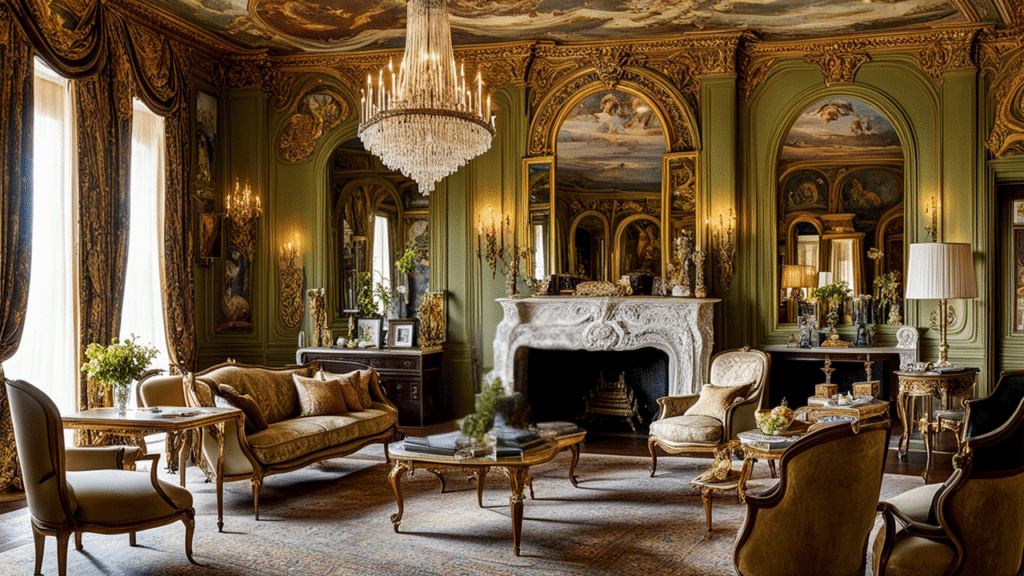
How to Identify Rococo Style Elements
- Recognize delicate, natural motifs and playful themes.
- Focus on ornate decorations in furniture and architecture.
- Understand how to apply Rococo into modern design.
Step #1: Recognize Artistic Features
Artistic features are the soul of Rococo style. Begin by noting the delicate motifs. Common motifs include shells, flowers, and foliage. These reflect nature’s elegance. You’ll often see them integrated into ceilings, walls, and furniture.
Next, look for themes that convey playfulness and light-heartedness. This is where Rococo stands out from the more serious Baroque style. Artworks may depict love scenes or mythological narratives. They often carry a whimsical feel. Recognizing these can help pinpoint Rococo style in art and design.
Step #2: Observe Decorative Elements
Rococo style thrives on decoration. Look for ornate and detailed furniture. Chairs and tables often feature intricate carvings and curves. Examine materials like mahogany or walnut, frequently used with cabriole legs. These elements highlight both function and beauty. Rococo design relies on the true craftsmanship of artisans, with each piece being a work of art.
Architecture also reflects this lavish ornamentation. Notice asymmetrical design in architectural elements such as windows and doorways. These are key traits of Rococo architecture. These may include elaborate carvings and stucco work. Such features deliver elegance and opulence.
Incorporation of Textiles
Soft, ornate textiles add warmth to Rococo interiors. Fabrics such as silk, brocade, and damask often appear. They are used as upholstery, wall coverings, and curtains. Pay attention to textures that convey both luxury and comfort. Colors should be soft and gentle. Pastels like light blue, pink, and green dominate the palette. These colors create a soothing yet vivid atmosphere.
To further capture the Rococo essence, look for embellishments in fabric design. Embroidered patterns often mirror the natural motifs mentioned earlier. They reflect both art and functionality.

Tips for Using Rococo Style in Modern Design
Reviving the Rococo style in modern spaces can be achieved through a balanced approach. Mixing traditional Rococo elements with modern pieces can work wonders. For instance, combining a modern sofa with a Rococo-style mirror introduces classic charm without overwhelming the space.
When selecting pieces, focus on eye-catching furniture from the Rococo period. This includes items with elaborate carvings and floral patterns. Such elements seamlessly integrate into contemporary settings as well.
What is the Best Approach to Rococo Style Decorating?
Creating a balanced aesthetic involves a careful selection of pieces and textiles. Rich textiles add elegance and coziness. Use velvet or silk for upholstery. These fabrics mirror Rococo’s luxury. Balance them with lighter, modern materials to avoid excessive formality.
Layer textures to add depth to the design. This may include pairing luxurious curtains with simple blinds. Alternatively, combine a Rococo style rug with a plain carpet. In my view, you must either do away with ornament – or make ornament the essence. This principle underscores the importance of thoughtful decoration.
Understanding these elements and techniques allows you to confidently identify Rococo features and bring their charm into modern design.

What to Remember About Rococo Style
Rococo style teaches us important lessons about art and design. This 18th-century movement shows us that beauty lies in the details. Its soft colors, curved lines, and focus on comfort continue to influence modern design choices.
The style’s blend of opulence and intimacy offers a unique perspective for today’s homes. We see how small touches—like adding ornate mirrors or choosing pastel colors—can transform ordinary spaces into extraordinary ones. Yet, Rococo’s true value lies in its visual appeal and ability to create welcoming, personal environments.
Today, you can start small. Pick one Rococo element that speaks to you—perhaps decorative moldings or soft, curved furniture. Add it thoughtfully to your space. Remember that good design balances boldness with restraint.
As you look at your surroundings, you’ll notice Rococo’s influence everywhere: in the gentle curves of modern furniture, how light plays with decorative elements, and in spaces that prioritize beauty and comfort. The style proves that luxury and comfort can exist together, creating spaces that feel special and lived-in.


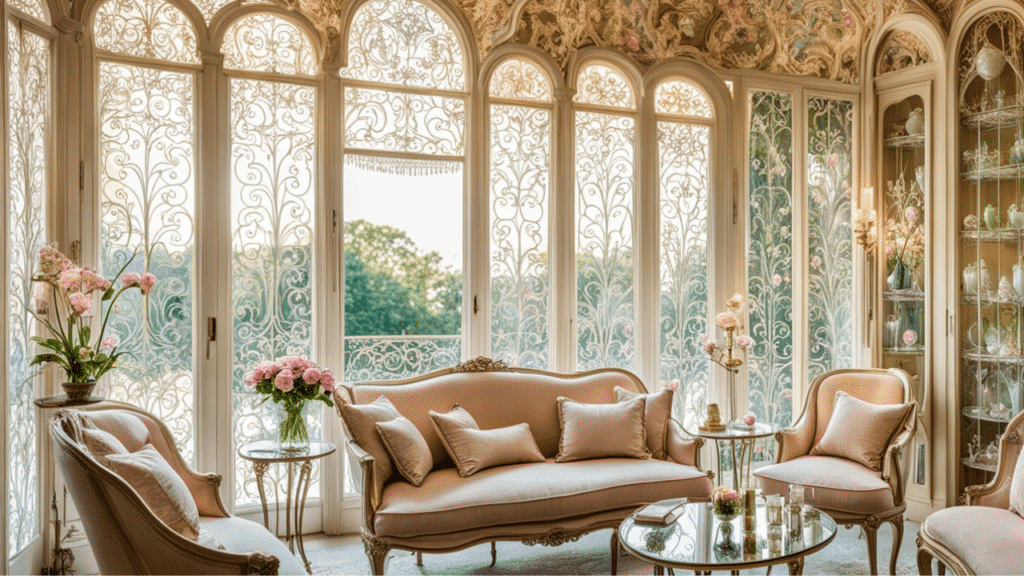











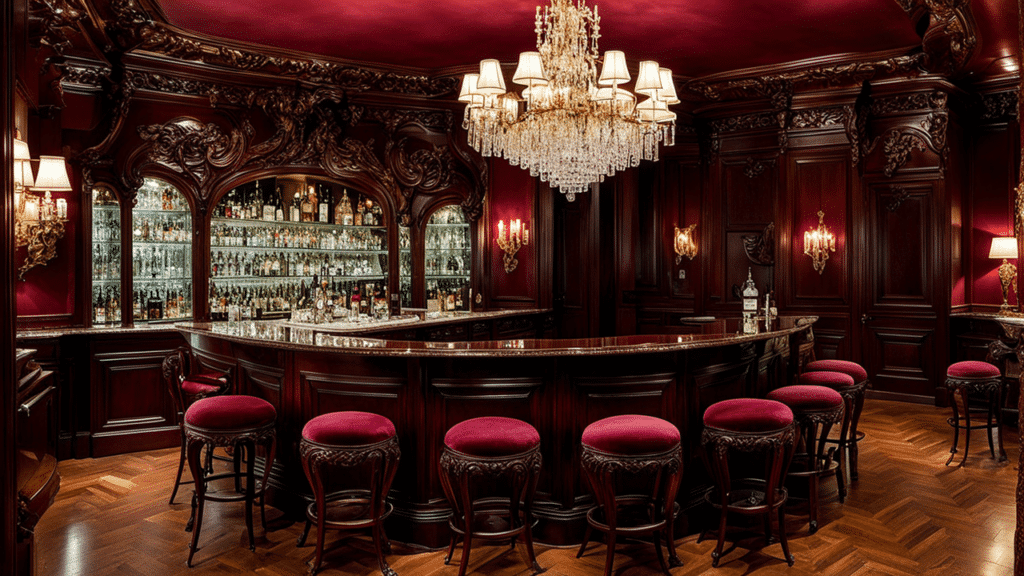

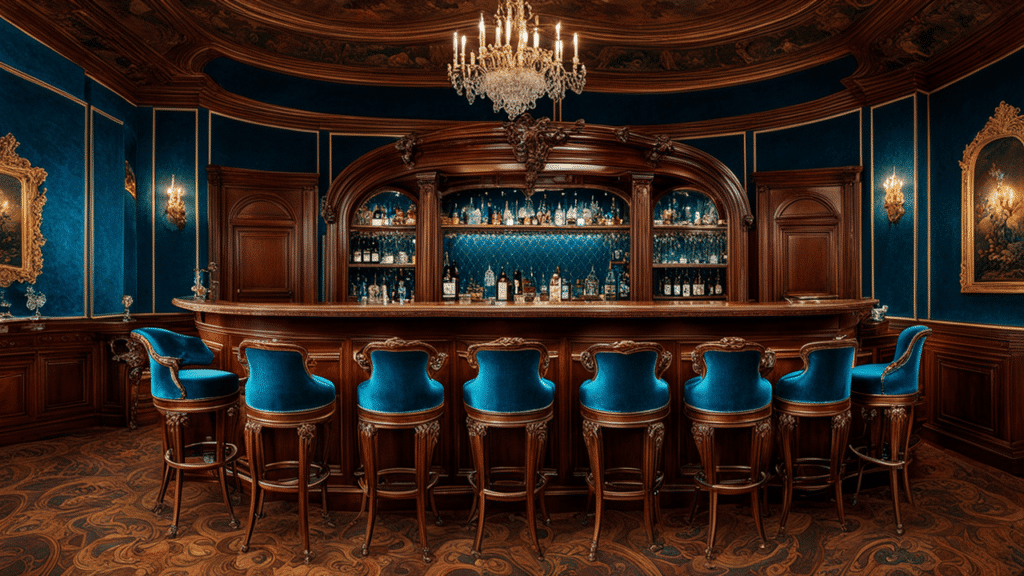











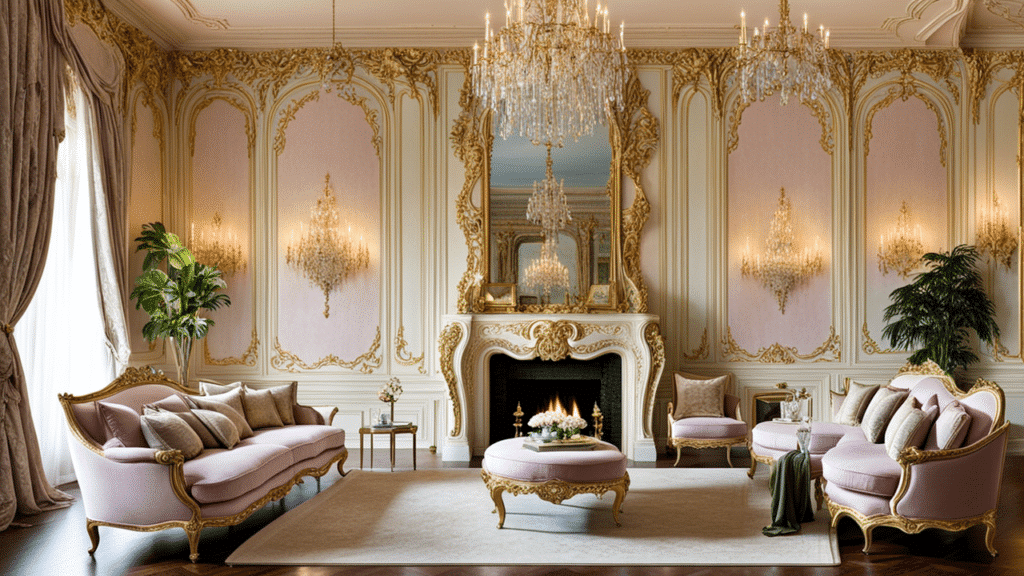







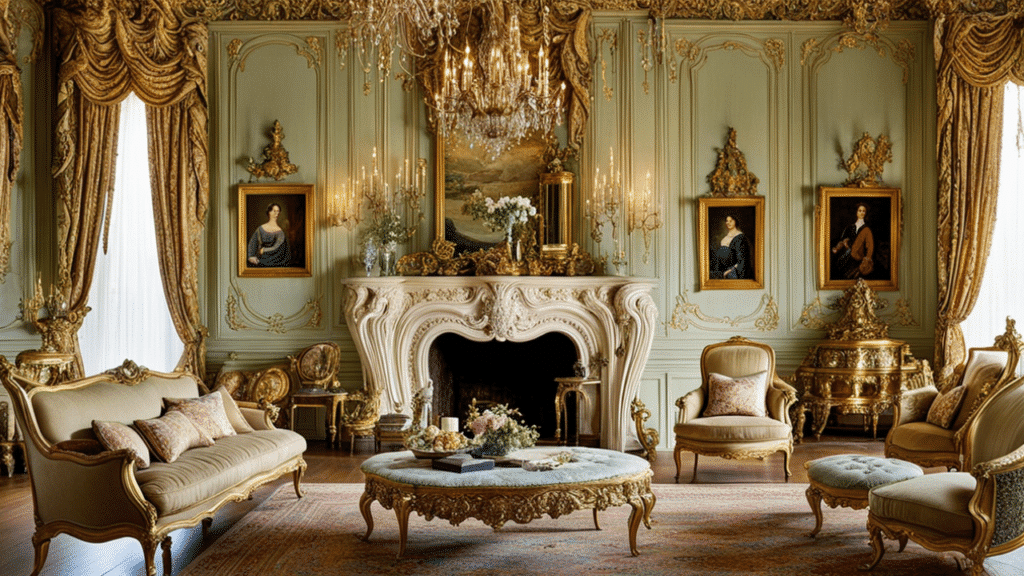







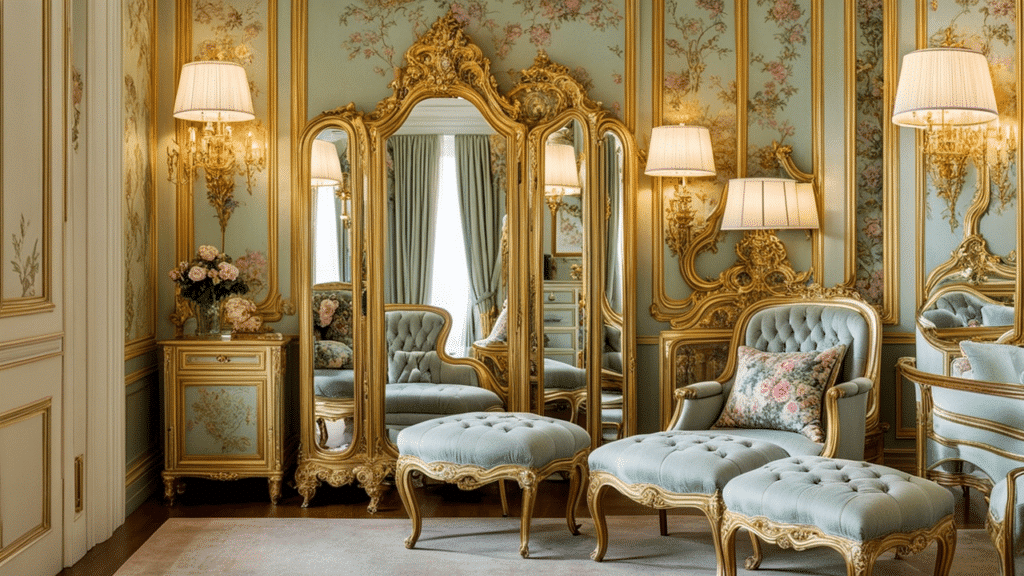









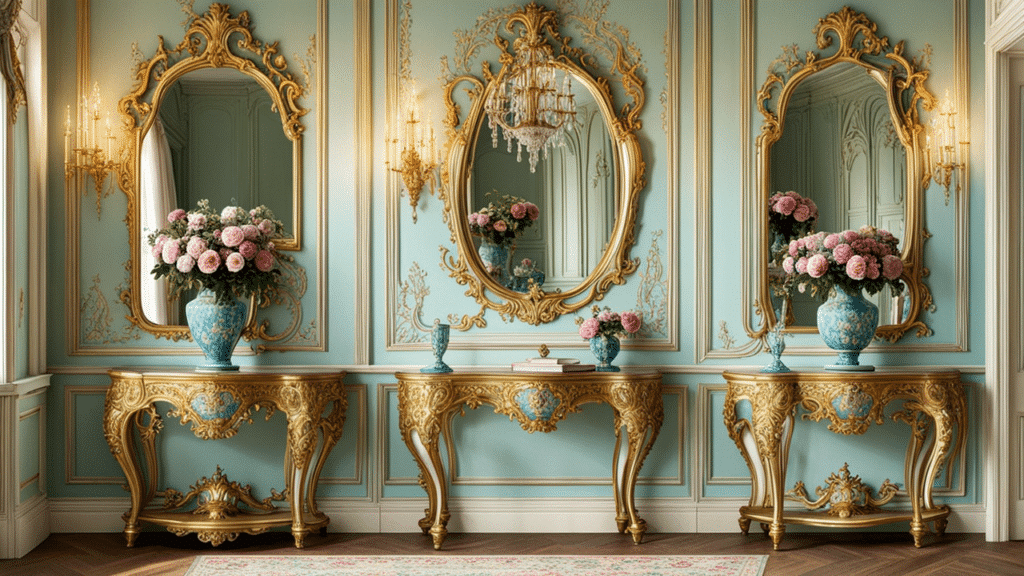
You’re now ready to bring some Rococo magic into your own space. The question is: which design element will you choose first?
